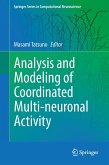As a career sociologist I ?rst became interested in neurosociology around 1987 when a graduate student lent me Michael Gazzaniga's The Social Brain. Ifthe biological human brain was really social, I thought sociologists and their students should be the ?rst, not the last, to know. As I read on I found little of the clumsy reductionism of the earlier biosociologists whom I had learned to see as the arch- emy of our ?eld. Clearly, reductionism does exist among many neuroscientists. But I also found some things that were very social and quite relevant for sociology. After reading Descarte's Error by Antonio Damasio, I learned how some types of emotion were necessary for rational thought - a very radical innovation for the long-honored "objective rationalist. " I started inserting some things about split-brain research into my classes, mispronouncing terms like amygdala and being corrected by my s- dents. That instruction helped me realize how much we professors needed to catch up with our students. I also wrote a review of Leslie Brothers' Fridays Footprint: How Society Shapes the Human Mind. I thought if she could write so well about social processes maybe I could attempt to do something similar in connection with my ?eld. For several years I found her an e-mail partner with a wonderful sense of humor. She even retrieved copies of her book for the use of my graduate students when I had assigned it for a seminar.
From the reviews:
"The intent of this book is to break down 'the walls between sociology and neuroscience to the benefit of both' ... . clearly intended for sociological social psychologists. ... How successful was this book in achieving the relevant depth and comprehensiveness of the issue raised above? Very successful in both respects. ... this book clearly identifies and explains the pivotal issues in this literature. ... the author has done an excellent as well as timely job in drawing out these implications." (Paul Tibbetts, The Quarterly Review of Biology, Vol. 86 (3), September, 2011)
"The intent of this book is to break down 'the walls between sociology and neuroscience to the benefit of both' ... . clearly intended for sociological social psychologists. ... How successful was this book in achieving the relevant depth and comprehensiveness of the issue raised above? Very successful in both respects. ... this book clearly identifies and explains the pivotal issues in this literature. ... the author has done an excellent as well as timely job in drawing out these implications." (Paul Tibbetts, The Quarterly Review of Biology, Vol. 86 (3), September, 2011)









